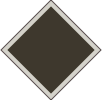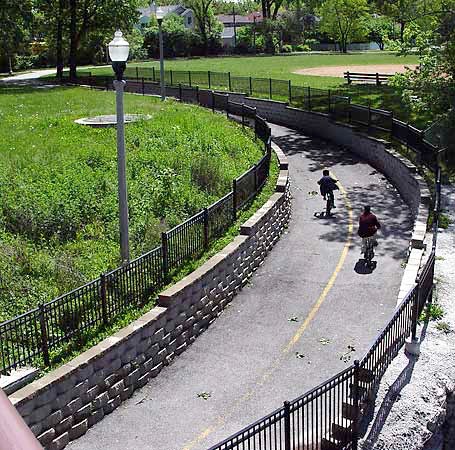1

A WALK THROUGH A
SCULPTURE GARDEN IN SPRING





This is where the path crosses over the North Branch of the Chicago River that I’ve been following so far. At this point, I start to take a different route.
Once over the spillway, the river merges with the North Shore Channel and continues south in the direction from which I've just come. However, upstream from here the river angles westward, while I'm continuing north, so I have to leave the river and travel alongside the channel.
This is the North Shore Channel.
And now for a brief history:
The Chicago River is the reason why Chicago became an important location, as the link between the Great Lakes and the Mississippi Valley waterways. In 1900, the flow of the river was reversed to head toward the Mississippi River basin, and away from Lake Michigan in order to keep the city’s pollution from contaminating Lake Michigan, the source of its drinking water. This was accomplished through a series locks and canals. The North Shore Channel was part of that project.
In 1910, this small artificial river was completed by building a dam, lock, and pumping plant at Wilmette, 8 miles north of Chicago. The channel runs straight as an arrow southward, connecting Lake Michigan with the North Branch and further helping the river's backward current. My walk took me north along this channel.



From this point the North Shore Channel is sandwiched between narrow strips of parkland through which an exercise path winds its way, sometimes on the east side of the channel, and sometimes on the west, with crossovers on bridges where the channel intersects city streets.

Here’s the path on the east bank, with the channel behind the trees on the left.

